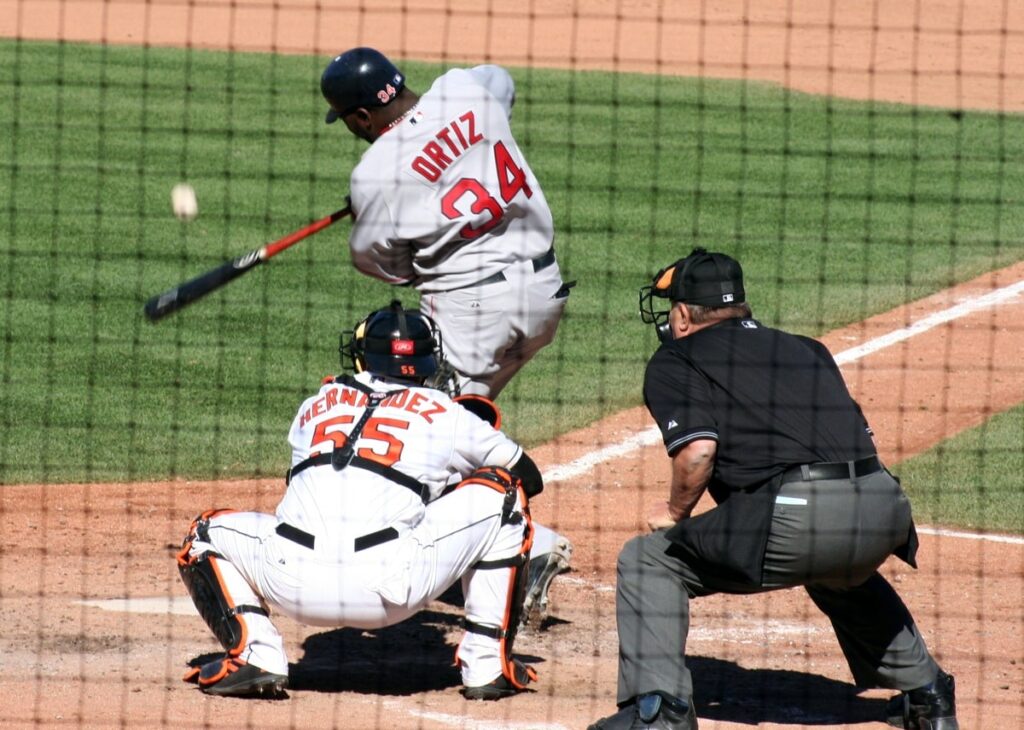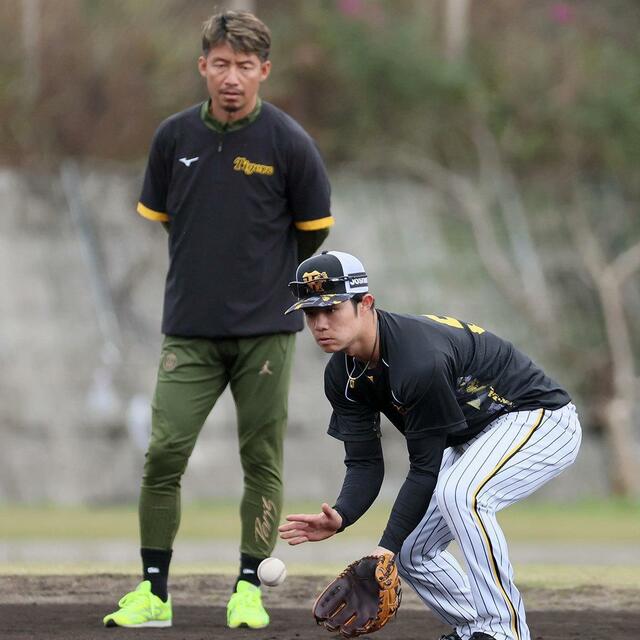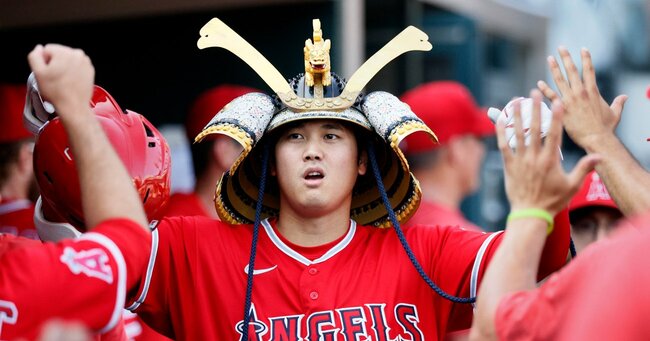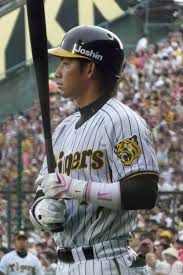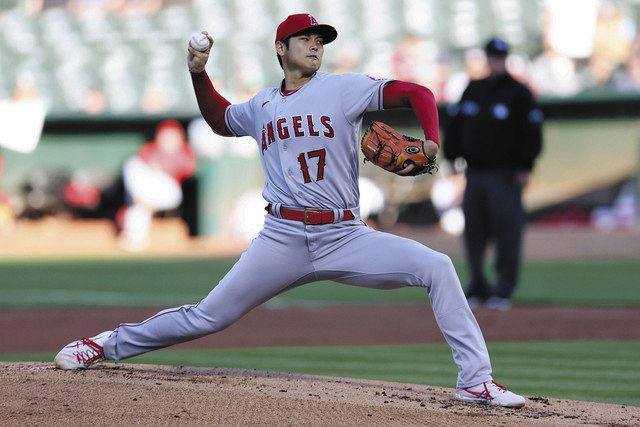
In Japanese professional baseball, a “pennant race” refers to the league games that take place throughout the season.
Each team will compete throughout the year to win the league championship.
The pennant race is a central element of the professional baseball season and a highly significant event for fans and players.
This article will provide an in-depth explanation of the pennant race, including its overview, history, importance, strategies, rivalries, data analysis, and fan engagement.
By understanding the overall picture of the pennant race, you will be able to gain a deeper understanding of its appeal and significance.
Let’s start by looking at the definition and basic mechanics of a pennant race.
目次
- 1 What is a Pennant Race?
- 2 History of the pennant race in Japanese professional baseball
- 3 The Importance and Appeal of the Pennant Race
- 4 Strategies for winning the pennant race
- 5 Major Pennant Race Rivalries
- 6 Pennant Race Data and Statistical Analysis
- 7 Fans and the Pennant Race
What is a Pennant Race?
In Japanese professional baseball, the pennant race refers to the league games that take place throughout the season.
Each team will compete throughout the year with the ultimate goal of winning the league championship.
This process is a very important event for both fans and players, and is one of the factors that enhances the appeal of professional baseball.
Definition and basic structure of the pennant race
The pennant race is a league competition in which teams from the Central League and Pacific League play a set number of games and compete for ranking based on their results.
The team with the most wins at the end of the season will be crowned the league champion and qualify for the next stage, the Climax Series.
The basics of the pennant race
The basic structure of a pennant race is as follows:
-
Number of matches :
- Each team in the Central League and Pacific League plays about 140 games per year, with an equal number of home and away games, and all teams compete against each other.
-
Ranking :
- Teams are ranked according to the number of wins and losses they have, with ties broken down by specific rules such as goal difference or head-to-head results.
-
Events during the season :
- During the pennant race, special events such as the All-Star Game and interleague games are held to entertain fans. In the interleague games, teams from the Central League and Pacific League face off against each other, creating a matchup that is not usually seen.
-
Climax Series :
- After the pennant race is over, the top three teams from each league advance to the Climax Series. The team that wins this short-term showdown will earn the right to play in the Japan Series.
Pennant Race Strategy and Importance
The pennant race is not just a series of games; it requires a strong element of strategy.
It is important to manage players’ condition throughout the season and create an optimal rotation.
It is also essential to analyze data for each match and prepare to respond to the strategies of the opposing team.
For example, a strategy is adopted in which ace pitchers are deployed in important games by carefully planning the pitcher rotation.
Additionally, trades during the season and strengthening new players are also important factors in winning the pennant race.
These strategic efforts will have a significant impact on your final ranking.
The role of fans and the appeal of the pennant race
The appeal of the pennant race lies in the tension and drama of every game.
By cheering throughout the season, fans can feel a sense of unity with their team.
The cheering squads, cheering songs, and enthusiastic cheers in the stadium are a great source of encouragement for the players.
Furthermore, since the results of the pennant race are directly linked to the Climax Series and Japan Series, games at the end of the season are particularly important.
The matches for rankings and playoff advancement will be can’t-miss events for fans.
A pennant race is a league competition that takes place throughout the Japanese professional baseball season, in which each team competes throughout the year with the aim of winning the league championship.
By understanding the basic mechanics, strategic elements, and interactions with fans, you will be able to appreciate the appeal of the pennant race more deeply.

History of the pennant race in Japanese professional baseball
The history of the pennant race in Japanese professional baseball has undergone many changes since its establishment up to the present day.
A pennant race is a league competition that takes place throughout a professional baseball season, with each team competing throughout the year for the championship.
This section will take a closer look at the history of the pennant race, its evolution, and the differences between the early pennant race and today’s.
History of the Pennant Race and its Evolution
The pennant race in Japanese professional baseball began in 1936.
At that time, the Japan Professional Baseball League (JBL) was established and league matches were held with eight teams participating.
This was the beginning of the pennant race in Japan.
After the war, the current Central League and Pacific League were established in 1950, and each league began to hold a pennant race.
The pennant race produced a lot of drama during the 1950s and 1960s.
In particular, during the golden age of the Yomiuri Giants, many famous players flourished and boosted the popularity of professional baseball.
During this period, the pennant race became an established part of Japanese sports culture and attracted nationwide attention.
From the 1970s to the 1980s, teams like the Hiroshima Toyo Carp and Seibu Lions rose to prominence, and fierce battles for the championship unfolded in each league.
The appeal of the pennant race is the long-term battle that takes place throughout the season, with fans cheering on their teams with mixed emotions.
In the 1990s, the pennant race evolved even further.
With the construction of new stadiums and improved television broadcasting, the pennant race has become more accessible to a wider audience.
In addition, players’ training methods and tactics have evolved, and the level of matches has risen.
Differences between the early pennant races and today
In the early days of the pennant race, the number of games and the management structure were very different from what they are today.
For example, in the inaugural year in 1936, each team only played a few dozen games, and the overall number of games played was small.
However, nowadays, each team plays more than 140 games per year, and the number of games played across the league has increased significantly.
Also, in the early pennant races, the tactics and training methods of players were very different from today.
In the past, physical training for players and data analysis were not as advanced as they are today, and games were played in a simpler manner.
In contrast, in today’s pennant race, the latest scientific training methods and data analysis are being introduced to maximize players’ performance.
Additionally, the attention given to the pennant race and fan interest have changed significantly.
In the early days, most fans went to the stadium, but now with the spread of television and internet broadcasts, it is possible to watch the game from anywhere in the country.
This has expanded the fan base of professional baseball fans, and the pennant race is attracting more and more attention.
Looking at the history of the pennant race and how it has changed over time, we can clearly see how professional baseball has evolved and developed.
By understanding the difference between the early pennant race and today, you will be able to appreciate the appeal of Japanese professional baseball even more deeply.
The pennant race is more than just a competition of wins and losses; it continues to create great drama and excitement for players and fans.

The Importance and Appeal of the Pennant Race
The pennant race is a league competition that takes place throughout the Japanese professional baseball season, and its importance and appeal vary widely.
Here we will take a closer look at the impact the pennant race has on professional baseball and its appeal to fans.
The impact of the pennant race on professional baseball
The pennant race is the main stage on which teams compete throughout the professional baseball season, and its results have a huge impact on the entire league.
First of all, the pennant race directly affects each team’s strategy and player selection.
Since consistent performance throughout the season is required, teams need to carefully manage player rotations and condition.
This requires team management to take a long-term perspective.
Furthermore, the results of the pennant race will determine who can participate in the Climax Series (CS) and Japan Series, so the battle will intensify as the season draws to a close.
This pressure will lead to improved player performance and more exciting games for fans.
The pennant race also has a major impact on a team’s finances.
Winning the league or advancing to the top of the rankings will increase attendance and sales of related merchandise.
In particular, the stadium’s ability to attract customers increases significantly during seasons when there is a battle for the championship or fierce playoff competition.
This will increase the team’s revenue and give them more room to invest in additional player recruitment and facility improvements.
The pennant race is also an important factor in supporting the popularity of professional baseball as a whole.
The dramatic games and rivalries that unfold throughout the season add to the appeal of professional baseball and draw many fans.
The results of the pennant race will build anticipation for the next season and also help attract a new fan base.
The appeal of the pennant race for fans
For fans, the pennant race is the biggest event of the professional baseball season.
The appeal of soccer lies not only in the excitement and tension of each match, but also in the joy of watching the long-term growth of teams and the performance of players.
The pennant race provides an arena for fans to cheer on their teams throughout the season, creating a sense of unity with them.
In particular, the battle for the championship and playoff spots towards the end of the season are events that fans cannot miss.
With the standings so close, each game creates drama, adding to the excitement in the stadium and on television.
Fans cheer and sometimes cry over every pitch and hit made by the players.
Furthermore, the appeal of the pennant race lies in the matches against rival teams.
Traditional rivalries and regional rivalry-driven games have special meaning for fans.
At these matches, the cheering style and stadium atmosphere are even more enthusiastic, doubling the enjoyment of watching the games.
Fan events and promotions are also a big part of enjoying the pennant race.
Each team holds events and campaigns to deepen interactions with fans and increase their enthusiasm for supporting their teams.
For example, various initiatives are being carried out, such as events to interact with players, sales of limited edition goods, and fan appreciation days.
The pennant race plays a vital role in Japanese professional baseball, influencing team strategies, economics, and even fan cheering styles.
For fans, the pennant race is the greatest event to enjoy all season and its appeal is immeasurable.
The drama that unfolds throughout the pennant race adds to the appeal of professional baseball and continues to attract many people.

Strategies for winning the pennant race
In order to win the pennant race, it is important to carefully plan team strategies, player selection, and rotation management throughout the season.
A professional baseball season is a long one, and many factors must be taken into consideration to ensure a team’s consistent performance.
Here we’ll take a closer look at team strategies throughout the season and the importance of player selection and rotation.
Team strategy throughout the season
A professional baseball season lasts about six months, with each team playing around 140 games.
There are a few key strategies that will help your team perform consistently well throughout this long season.
First of all, long-term planning that looks at the entire season is essential.
This includes managing player conditioning, preventing injuries and implementing appropriate training programs to promote player development.
In particular, it is necessary to strike a balance between developing young players and utilizing the experience of veteran players.
The importance of data analysis is also increasing.
By utilizing the latest technology, it is possible to conduct detailed analysis of opponents’ tendencies and your own team’s weaknesses, allowing you to develop tactics for each match.
This allows you to develop the best strategy for each match and increase your chances of winning.
Additionally, trades and reinforcements during the season are also an important part of the strategy.
Especially as the mid-season trade deadline approaches, teams will acquire players to fill their weaknesses and rebuild their forces.
Moves like this will be key to winning the pennant race.
The importance of player selection and rotation
Managing your player selection and rotations will be key to winning the pennant race.
In particular, pitcher rotations have a significant impact on a team’s wins and losses.
By managing pitchers’ fatigue and giving them optimal rest at the right times, you can ensure they maintain consistent performance throughout the season.
When it comes to pitcher rotations, the strategy is to use ace pitchers in important games.
This will help you secure victory in important matches.
In addition, having young pitchers pitch regularly helps them grow and reduces the burden on veteran pitchers.
Appropriate rotation is also necessary when it comes to using fielders.
It is important to utilize not only regular players but also reserve players.
Taking into account injuries and fatigue during the season, you can effectively use substitute players to maintain the performance of your entire team.
Additionally, by strategically rearranging the batting order and changing defensive positions based on matchups with the opposing pitcher, you can turn the tide of the game in your favor.
In addition, it is also important to take care of the mental health of the players.
To get through a long season, it is necessary to manage players’ mental fatigue and maintain their motivation.
With the support of coaches and mental trainers, it is essential to ensure that players are always playing at their best.
There are many different strategies for winning the pennant race.
It’s important to plan your team’s strategy throughout the season, be flexible with your player selections, and manage your pitcher and fielder rotations.
By balancing these elements, a team can achieve consistent performance over the long term and ultimately win the pennant race.

Major Pennant Race Rivalries
There are many rivalries in the pennant race in Japanese professional baseball, and each matchup has special meaning for fans.
These rivalries, rooted in historical background and regional rivalries, add extra excitement to the annual pennant race.
This chapter provides an in-depth look at the traditional rivalries and their background, as well as current major rivalry battles.
Traditional rivalries and their background
Japanese professional baseball has a number of traditional rivalries that have developed over its long history.
These matches have a special meaning beyond simply winning or losing, and are extremely important events for fans.
Yomiuri Giants vs. Hanshin Tigers
The match between the Yomiuri Giants and the Hanshin Tigers is known as the “Traditional Match” and is one of the most representative rivalries in Japanese professional baseball.
This match has a long history dating back to the founding of professional baseball in 1936, and also includes an element of regional rivalry between Tokyo (Giants) and Osaka (Hanshin).
While the Giants are popular nationwide, the Hanshin Tigers have enthusiastic support in the Kansai region. Matches between the two teams always attract attention, and each game is full of drama.
Chunichi Dragons vs. Hanshin Tigers
The match between the Chunichi Dragons and the Hanshin Tigers is also a rivalry with a long history.
The Chunichi Dragons are based in Nagoya and are geographically close to the Hanshin Tigers, so there is a strong regional rivalry between the two teams.
Matches between the two teams will be particularly important in the battle for position at the end of the season.
Hiroshima Toyo Carp vs. Hanshin Tigers
The match between the Hiroshima Toyo Carp and the Hanshin Tigers is also one of the most notable rivalries.
The Hiroshima Carp grew in strength from the 1970s onwards and engaged in fierce battles with the Hanshin Tigers.
There is fierce rivalry between the fans of both teams, and the excitement of the match is unlike any other.
Current main rivalries
In modern professional baseball, new rivalries have formed and these matchups are an important part of the excitement of the pennant race.
Fukuoka SoftBank Hawks vs. Saitama Seibu Lions
The matchup between the Fukuoka SoftBank Hawks and Saitama Seibu Lions is currently a major rivalry in the Pacific League.
The two teams have competed for championships many times in recent years and are in fierce competition with each other.
In particular, the matchups at the end of the season will be crucial in determining who wins the league.
Hokkaido Nippon-Ham Fighters vs. Tohoku Rakuten Golden Eagles
The Hokkaido Nippon-Ham Fighters and Tohoku Rakuten Golden Eagles have also been a rivalry that has attracted attention in recent years.
In addition to the geographical proximity of Hokkaido and Tohoku, both teams have emerged as emerging forces.
This matchup holds a special meaning for the fans and is always a fierce battle.
Yokohama DeNA BayStars vs. Tokyo Yakult Swallows
In the Central League, the rivalry between the Yokohama DeNA BayStars and the Tokyo Yakult Swallows has also been attracting attention in recent years.
Both teams have many young players and are building their teams with an eye to the future, so the match is fierce.
In particular, the match is attracting attention as it is between teams from the metropolitan area.
Pennant race rivalries are an important part of what makes professional baseball so appealing.
Traditional rivalries and new ones create a lot of drama and excitement throughout each season.
These matchups have special meaning for fans and are a major factor in supporting the popularity of professional baseball.

Pennant Race Data and Statistical Analysis
Data and statistical analysis plays a vital role in the pennant race.
These analyses directly influence team strategies and player selection, and have a significant impact on final results.
Here we take a closer look at key statistics in the pennant race and how data analysis can impact your strategy.
Key statistics for the pennant race
There are a wide variety of statistical data that are important in the pennant race.
Below are some key data points of particular interest.
-
Win Rate :
- Win percentage is the most basic indicator of a team’s performance. It is calculated by dividing the number of wins by the total number of games played, and it has a significant impact on determining league rankings.
-
Batting Average (BA) :
- Batting average is an important indicator for evaluating a batter’s batting performance. It is calculated by dividing the number of hits by the number of at-bats, and indicates the probability that a batter will hit a home run.
-
Earned Run Average (ERA) :
- ERA is an indicator to evaluate a pitcher’s ability. It shows the average earned runs a pitcher allows per nine innings. A low ERA is a sign of a good pitcher.
-
OPS (On-base Plus Slugging) :
- OPS is an index that evaluates a batter’s overall batting ability, and is the sum of on-base percentage and slugging percentage. A high OPS indicates that a batter has excellent on-base and slugging ability.
-
WHIP (Walks plus Hits per Inning Pitched) :
- WHIP is the total number of hits and walks a pitcher allows per inning. A low WHIP indicates that a pitcher is effectively suppressing batters.
-
RS (Runs Scored) and RA (Runs Allowed) :
- RS indicates the total number of goals scored by a team, while RA indicates the total number of goals allowed by a team. These statistics are useful for evaluating a team’s offensive and defensive strength.
How data analytics impacts strategy
Data analysis is essential in formulating team strategies and selecting players.
Below we explain how data analytics can influence your strategy.
-
Player selection optimization :
- Data analysis allows managers and coaches to gain a detailed understanding of the condition of their players and how well they match up with their opponents, allowing them to optimize player selection and batting order arrangements, thereby improving the chances of winning a match.
-
Pitcher rotation management :
- By managing pitcher intervals and rest days based on data, you can reduce pitcher fatigue and maintain stable performance throughout the season. You can also create effective pitching plans by analyzing the opposing batters’ data.
-
Tactical Development :
- By analyzing the opponent’s data, teams can develop tactics that exploit their weaknesses. For example, shifting to a specific batter or knowing the best time to steal bases can help turn the tide of the game in their favor.
-
Trade and Reinforcement Decisions :
- Data analysis also supports trades and reinforcements during the season. By clarifying the team’s weaknesses and areas to strengthen, you can acquire the best players and strengthen your team. For example, acquiring a player with a high on-base percentage can improve the team’s overall offensive power.
-
Performance monitoring :
- Monitoring player performance throughout the season and providing data-driven feedback can help improve player development, especially when it comes to developing young players.
Analysis of data and statistics during the pennant race plays a crucial role in formulating team strategies and selecting players.
With proper data analysis, teams can develop more effective tactics and achieve consistent results throughout the season.
The use of data and statistics is an essential element of modern professional baseball and will continue to grow in importance.

Fans and the Pennant Race
The pennant race is the biggest event that professional baseball fans enjoy throughout the season.
Fans support their teams throughout the pennant race and fully experience the appeal of professional baseball by watching games and participating in events.
Here we’ll take a closer look at how fans can enjoy the pennant race and the events and promotions that will take place during the race.
How fans can enjoy the pennant race
-
Watching the game :
- The basis of the pennant race is watching the game. You can enjoy it at home on TV or via internet broadcasts, as well as live at the stadium. Watching the game at the stadium allows you to feel the excitement of the venue and the unity of the supporters, and you can also enjoy interacting with other fans.
-
Use of support goods :
- Using cheering goods such as team-colored uniforms, towels, megaphones, etc. will make cheering even more fun. Using cheering goods at the stadium will also increase the sense of unity among fans.
-
Social Media Interactions :
- Using social media makes it easy to interact with other fans and share information. By tweeting live coverage of the game and sharing your thoughts after the game, communication between fans becomes more active.
-
Player information collection :
- By checking the players’ interviews and post-match comments, you can learn about their feelings and enthusiasm for the match, which will help you enjoy the match even more.
-
Data analysis fun :
- Another way to enjoy the game is to use sports data sites and apps to analyze the performance of teams and players. Predicting the outcome of the game based on statistical data and coming up with your own strategy can make watching the game even more interesting.
Events and promotions during the pennant race
-
Fan Appreciation Day :
- Many baseball teams hold “Fan Appreciation Days” during or after the season. These events provide fans with the opportunity to get up close and personal with the players, including interacting with them, signing autographs, and taking photos. There are also special events and merchandise sales exclusive to Fan Appreciation Day.
-
Theme Days :
- Each team sometimes holds a “theme day” based on a specific theme. For example, on “Uniform Day,” special team uniforms are distributed to all visitors and the entire stadium is colored in the team’s colors. In addition, events themed around families or former famous players, such as “Parent-Child Day” and “Legend Day,” are also popular.
-
Promotional Campaign :
- During the season, various promotional campaigns are also held. For example, limited edition goods are given away to ticket buyers for certain games, and fan participation events are held before the game. These campaigns are intended to increase the enjoyment of watching the games.
-
Social Media Campaign :
- There are also many campaigns that utilize social media, such as campaigns where you can enter a prize draw by posting with the game’s hashtag, and live streaming events where players answer questions from fans.
-
Season tickets on sale :
- Another way to enjoy the pennant race is to purchase a season ticket, which gives you a designated seat to watch all home games and may even give you invitations to meet and greet events with players.
The pennant race includes many elements for fans to enjoy beyond just watching the games, through various events and promotions.
Through these activities, fans can deepen their bond with their teams and fully experience the appeal of professional baseball throughout the season.
